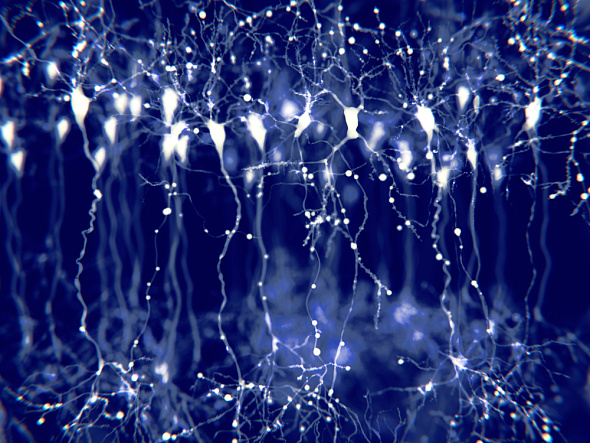CNS Library
Description
ChemDiv’s CNS library comprises 26,000 compounds with high blood-brain barrier permeability targeting targets located in the CNS.
This collection represents a unique assembly of chemically diverse small molecule compounds targeting proteins relevant to the CNS therapeutic area and associated neurological diseases, such as Parkinson’s disease, Alzheimer’s disease, schizophrenia, and drug dependence.
It was previously demonstrated that CNS activity and trans-cellular permeability are complex functions determined by the physical and chemical properties of molecules. Those properties include molecule size, lipophilicity, hydrogen-bonding potential, charge, and conformation. For any particular molecule, one of these factors may be more influential than the others. Generally, drugs designed to act in the brain should possess the ability to cross the BBB. Enhancing drug delivery to the brain can be achieved by increasing a molecule's lipophilicity, utilizing prodrugs that dissociate post-BBB penetration, or employing passive or active drug targeting strategies that leverage transport systems at the BBB, both in normal and pathological states. Furthermore, the transendothelial transport of compounds can be influenced by factors such as plasma binding, ionization state, time-dependent plasma concentration, and cerebral blood flow. Many of these properties can be modified through alterations in chemical structure. Therefore, optimizing the distribution of therapeutic compounds between the brain and blood is a critical aspect in the design of novel CNS-active drugs.
The importance of this small molecule library in drug discovery research, particularly for CNS and neurological disorders, cannot be overstated. Its unique compilation of compounds, specifically targeting proteins relevant to CNS conditions, provides a crucial resource for development of innovative therapeutics for challenging diseases like Parkinson's, Alzheimer's, schizophrenia, and drug dependence. The library's focus is on molecules that can effectively cross BBB and address one of the most significant hurdles in CNS drug development. By offering a range of compounds with varied physical and chemical properties, the library enables exploring and identifying molecules with optimal characteristics for brain-targeted therapies. Furthermore, the inclusion of molecules with potential for modification allows for the customization and optimization of drug candidates, enhancing their efficacy and safety profiles. This library thus represents a pivotal tool in bridging the gap between basic neuroscience research and the development of effective, targeted treatments for CNS disorders, accelerating the journey from laboratory discovery to clinical application.
Publications
1. Eur. J. Med. Chem. 2010(45)2:782-789. 8-Sulfonyl-substituted tetrahydro-1H-pyrido[43-b]indoles as 5-HT6 receptor antagonists. Ivachtchenko AV
Mitkin OD Tkachenko SE Okun IM Kysil VM.
2. Bioorg. Med. Chem. Lett. 2010(20)1:78-82. Synthesis and biological activity of 5-styryl and 5-phenethyl-substituted 2345-tetrahydro-1Hpyrido[43-b]indoles. Ivachtchenko AV Frolov EB Mitkin OD Tkachenko SE Okun IM Khvat AV.
3. Bioorg. Med. Chem. Lett. 2005(15)22:4889-4897. 35-Bicyclic aryl piperidines: a novel class of alpha4beta2 neuronal nicotinic receptor partial
agonists for smoking cessation. Coe JW Brooks PR Wirtz MC Bashore CG Bianco KE Vetelino MG Arnold EP Lebel LA Fox CB Tingley FD Schulz DW
Davis TI Sands SB Mansbach RS Rollema H O'Neill BT.
4. Bioorg. Med. Chem. Lett. 2010(20)16:4749-4752. A novel series of [3.2.1] azabicyclic biaryl ethers as alpha3beta4 and alpha6/4beta4 nicotinic
receptor agonists. Lowe JA DeNinno SL Coe JW Zhang L Mente S Hurst RS Mather RJ Ward KM Shrikhande A Rollema H Johnson DE Horner W
Gorczyca R Tingley FD Kozak R Majchrzak MJ Tritto T Sadlier J Shaffer CL Ellerbrock B Osgood SM MacDougall MC McDowell LL.
5. J. Med. Chem. 2009(52)13:3855-3868. 5-hydroxyindole-2-carboxylic acid amides: novel histamine-3 receptor inverse agonists for the treatment
of obesity. Pierson PD Fettes A Freichel C Gatti-McArthur S Hertel C Huwyler J Mohr P Nakagawa T Nettekoven M Plancher JM Raab S Richter H
Roche O Rodríguez Sarmiento RM Schmitt M Schuler F Takahashi T Taylor S Ullmer C Wiegand R.
6. J. Med. Chem. 2008(51)21:6889-6901. Synthesis and evaluation of structurally constrained quinazolinone derivatives as potent and selective
histamine H3 receptor inverse agonists. Nagase T Mizutani T Sekino E Ishikawa S Ito S Mitobe Y Miyamoto Y Yoshimoto R Tanaka T Ishihara A
Takenaga N Tokita S Sato N.
7. Substituted cycloalcano[e and d] pyrazolo [15-a]pyrimidines/antagonists of serotonin 5-HT6 receptors and methods for production and the use
thereof US-8629154-B2 2014
8. Bioorg. Med. Chem. Lett. 2009(19)12:3214-3216. Identification of a novel series of 3-piperidinyl-5-sulfonylindazoles as potent 5-HT6 ligands. Liu
KG Lo JR Comery TA Zhang GM Zhang JY Kowal DM Smith DL Di L Kerns EH Schechter LE Robichaud AJ.
9. J. Med. Chem. 2011(54)23:8161-8173. Synthesis and structure-activity relationship (SAR) of (57-disubstituted 3-phenylsulfonyl-pyrazolo[15-
a]pyrimidin-2-yl)-methylamines as potent serotonin 5-HT(6) receptor (5-HT(6)R) antagonists. Ivachtchenko AV Golovina ES Kadieva MG Kysil VM
Mitkin OD Tkachenko SE Okun IM.
